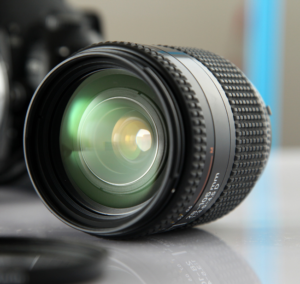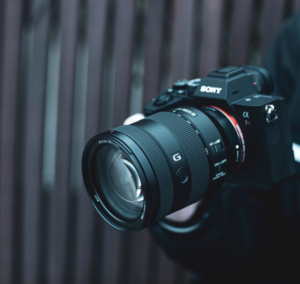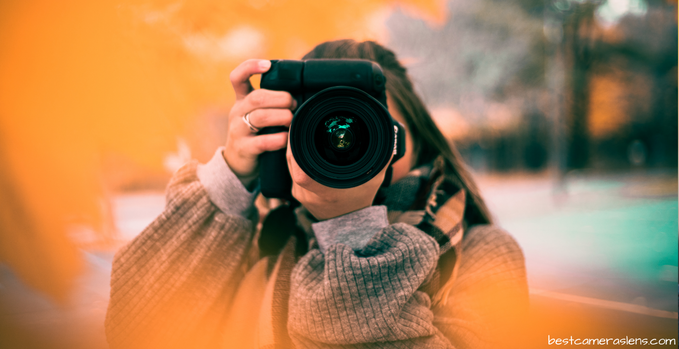If you did not know What Lenses Should a Beginner Photographer Have. As a beginner photographer, it can be overwhelming to navigate the vast world of camera lenses and choose the best ones for your needs. There is a wide range of lenses available, each with its own specific set of features and uses. In this article, we’ll go over some key considerations for choosing lenses as a beginner photographer and provide some recommendations for lenses that can help you get started.
As a beginner photographer, it’s important to have a lens that can handle a wide range of subjects and situations. Here are a few lenses that are great for beginners:
Standard prime lens: A lens with a fixed focal length (e.g. 50mm) is a great all-around lens that is versatile and can be used for many different types of photography.
Wide-angle lens: A lens with a wide field of view (e.g. 18mm) is great for landscape and architecture photography, as well as for capturing large group shots.
Telephoto lens: A lens with a longer focal length (e.g. 70-200mm) is great for portraits and sports photography, as it allows you to capture subjects that are farther away.
Macro lens: A lens specifically designed for close-up photography of small subjects (e.g. insects, flowers) is a great tool to have in your arsenal.
It’s important to note that the best lens for a beginner photographer will depend on their specific interests and goals. It’s always a good idea to try out a few different lenses and see which ones you like best.
1. What is a Standard Prime Lens?
A standard prime lens is a type of lens that has a fixed focal length, meaning that it cannot zoom in or out. These lenses are typically small and lightweight, and they are designed to be used on a variety of cameras, including DSLRs and mirrorless cameras. Standard prime lenses are usually used for general-purpose photography, such as portraits, landscapes, and street photography.

One of the main advantages of standard prime lenses is that they tend to be faster than zoom lenses, meaning that they have a wider aperture and can let in more light. This makes them ideal for shooting in low light conditions or for creating shallow depth of field effects. They also tend to be sharper and have better image quality than zoom lenses, especially at their widest aperture settings.
Some examples of standard prime lenses include the 50mm f/1.8, the 35mm f/1.4, and the 85mm f/1.8. These lenses are popular among photographers because they offer a natural field of view and are versatile enough to be used in a wide range of situations.
What is the Difference Between Standard and Prime Lens?
A standard lens is a lens with a focal length that is roughly equivalent to the diagonal size of the camera’s image sensor. Standard lenses are typically used for general-purpose photography and can produce images with a natural perspective, similar to what the human eye sees. They are often described as having a “normal” field of view.
A prime lens, on the other hand, is a lens with a fixed focal length, meaning it cannot zoom in or out. Prime lenses are known for their ability to produce sharp, high-quality images and are often used by photographers who want to achieve a specific look or perspective. They are also typically smaller and lighter than zoom lenses, which makes them more portable and easier to carry around.
In general, standard lenses are a good choice for photographers who want a versatile lens that can be used for a wide range of subjects and situations. Prime lenses, on the other hand, are better suited for photographers who want to achieve a specific look or who are willing to take the time to compose their shots carefully.
What is considered a Standard Lens?
A standard lens is a lens with a focal length that is roughly equivalent to the diagonal length of the sensor or film frame that it is used with. For example, on a full-frame camera with a 36mm x 24mm sensor, a 50mm lens would be considered a standard lens. On a camera with a smaller APS-C sensor, a lens with a focal length of around 35mm would be considered standard.
Standard lenses are often used for a wide range of photography, including portraiture, street photography, and documentary work. They are often preferred for their ability to capture a natural-looking perspective and for their versatility. Standard lenses tend to have a moderate wide-angle to moderate telephoto focal length, which allows them to capture a wide range of subjects with good detail and sharpness. They are also relatively lightweight and compact, making them convenient to carry around.
2. What is a Wide-angle lens?
A wide-angle lens is a lens with a shorter focal length, which allows it to capture a wider field of view than a lens with a longer focal length. Wide-angle lenses are often used in landscape photography, architecture photography, and other types of photography where it is important to capture a large area in the frame.

They are also often used in documentary and street photography, as they allow the photographer to capture a sense of the environment and context in which the subject is located. Wide-angle lenses can have a focal length as short as 10mm or less, and they can be found in both prime and zoom forms.
What is Considered a Wide-Angle Lens?
A wide-angle lens is a lens that has a shorter focal length and a wider field of view than a standard lens. Wide-angle lenses are typically used to photograph landscapes, architecture, and large groups of people, as they allow you to capture more of the scene in the frame. They are also commonly used for creative effects, such as distortion and perspective control.
The exact definition of a wide-angle lens can vary depending on the format of the camera, but generally, a lens with a focal length of 35mm or less is considered to be a wide-angle lens for a full-frame camera. For a crop-sensor camera, a lens with a focal length of around 24mm or less is typically considered to be a wide-angle lens.
It’s important to note that the term “wide-angle” is relative, as a lens that is considered wide-angle on one camera may not be considered wide-angle on another camera with a different sensor size.
3. What is a Telephoto Lens?
A telephoto lens is a type of camera lens that has a longer focal length than a standard lens, which allows it to magnify distant objects and make them appear closer. Telephoto lenses are typically used for photography that requires a narrow field of view, such as portraits, wildlife, and sports photography.

They can also be used to compress the foreground and background of an image, creating a more dramatic and artistic effect. Telephoto lenses are generally larger and heavier than standard lenses, and they often have a longer minimum focusing distance, which means they may not be as suitable for close-up photography.
What is the Difference Between a Telephoto Lens and a Zoom Lens?
A telephoto lens is a type of lens that has a longer focal length than a normal lens, which allows it to capture distant subjects with greater magnification. A zoom lens, on the other hand, is a lens that allows you to adjust the focal length, allowing you to change the magnification and field of view of the lens.
Telephoto lenses are generally used for portraits, sports, and wildlife photography, as they allow you to get closer to the subject without physically moving closer. They tend to have a narrow field of view, which can be useful for isolating the subject from the background.
Zoom lenses, on the other hand, are more versatile, as they allow you to adjust the focal length and field of view to suit the needs of the scene. They are often used in situations where it is not practical to change lenses or move closer to the subject, such as when you are shooting from a fixed position or when the subject is moving.
In general, telephoto lenses are better for getting closer to the subject and isolating it from the background, while zoom lenses are more versatile and allow you to adjust the focal length and field of view to suit the needs of the scene.
4. What is a Macro Lens Good For?
A macro lens is a lens designed for taking close-up photographs of small subjects, such as insects, flowers, and other small objects. Macro lenses allow you to capture detailed, highly magnified images of small subjects by getting very close to them. They typically have a very short minimum focusing distance, which allows you to get close to your subject and still be able to focus on it.

Macro lenses are useful for a variety of applications, including scientific and technical photography, product photography, and nature photography. They are also popular among photographers who enjoy taking close-up shots of small objects or details in everyday objects.
Some macro lenses are specifically designed for use with digital SLR cameras, while others are designed for use with film cameras. Many modern macro lenses are also capable of functioning as normal lenses, allowing you to use them for a wide range of photographic subjects.
Conclusion
In conclusion, there are many factors to consider when choosing lenses for a beginner photographer. It’s important to understand the different types of lenses available, as well as the focal length and aperture of each lens. A standard prime lens, a wide
